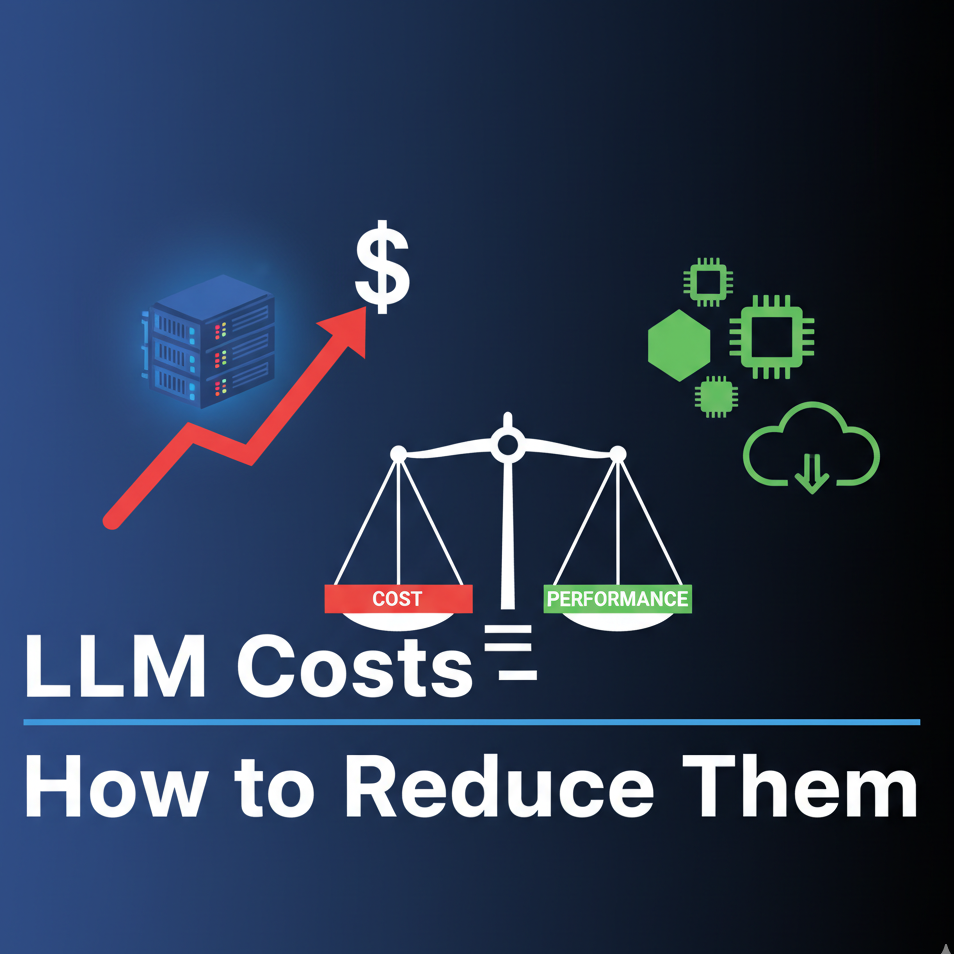High Computational Costs and Infrastructure in Working with LLMs - How to Reduce Them
Published: 2025-09-29
High Computational Costs and Infrastructure in Working with LLMs - How to Reduce Them
Solutions based on large language models (LLMs) have become the foundation of many systems in recent years - from chatbots to semantic search engines and business assistants. However, alongside enormous possibilities comes a real challenge: infrastructure and computational costs.
Models with billions of parameters require expensive GPUs, large memory capacity, and stable network connections. When using cloud APIs (e.g., OpenAI, Anthropic, AWS Bedrock), scale becomes the problem - the more users you have, the faster your bill grows. A non-optimized system can quickly become unprofitable.
In this post, I'll show several concrete techniques that allow you to reduce costs while maintaining response quality.
1. Smaller Models with Fine-Tuning
Instead of using the largest models available in the cloud, it's worth considering smaller open-source models (e.g., LLaMA 3, Mistral, Phi-3) and fine-tuning them to your domain using fine-tuning or techniques such as LoRA (Low-Rank Adaptation).
A well-selected and trained smaller model:
- runs faster,
- requires less GPU/CPU,
- can be run locally,
- with proper tuning, matches the quality of larger models in specific tasks.
2. Query (Prompt) Optimization
Every query to the model costs money. Key optimization techniques include:
- Batching - grouping multiple queries in a single request, which reduces communication overhead and allows better GPU utilization.
- Caching - storing responses for recurring prompts. This is particularly effective in systems with predictable queries (e.g., email templates, FAQs).
- Shorter prompts - every token costs money. A precisely defined instruction often produces better results than an overly verbose context.
3. Model Compression
If the model runs locally, it's worth using methods to reduce its size:
- Quantization - reducing weight precision (e.g., from FP16 to INT8/INT4), which saves memory and speeds up inference.
- Distillation - training a smaller model on data generated by a larger one, so it inherits its "knowledge".
- Pruning - removing insignificant connections in the neural network.
Thanks to these techniques, the model takes up less space, runs faster, and consumes less energy.
4. Hybrid Architecture: Local Model + API
One of the most practical approaches is a hybrid architecture:
- Local model handles basic tasks (e.g., classification, data parsing, simple queries).
- External API is invoked only when high-quality responses or complex reasoning are necessary.
This approach allows you to significantly reduce the number of expensive cloud calls without losing service quality.
Summary
When implementing LLMs in business, computational costs are unavoidable - but they can be effectively managed. The most important techniques are:
- using smaller, fine-tuned models,
- query optimization (batching, caching, shorter prompts),
- model compression and acceleration,
- hybrid approach combining local solutions with APIs.
Thanks to these methods, we can build scalable and economically justified systems based on artificial intelligence.
